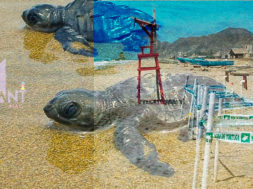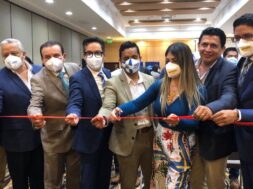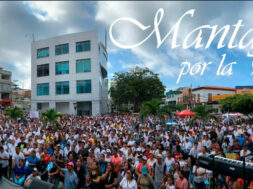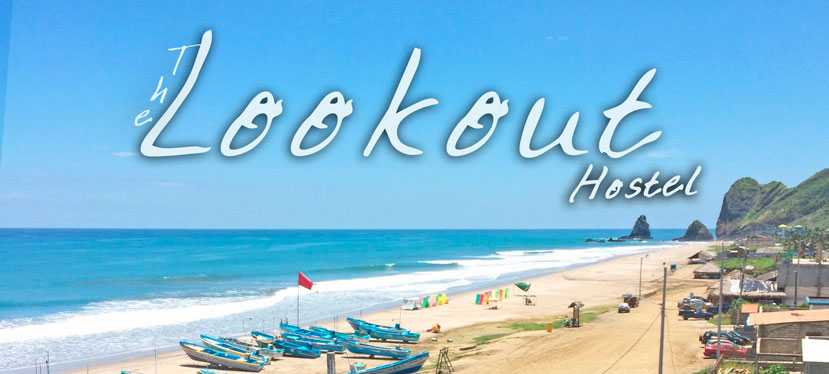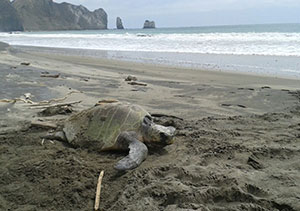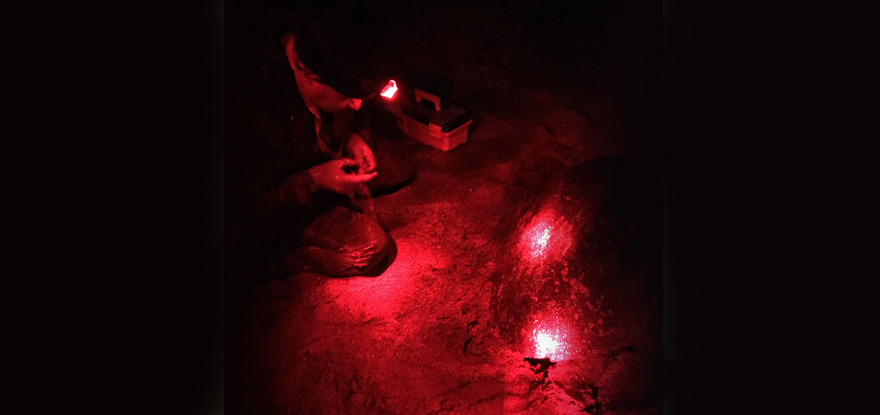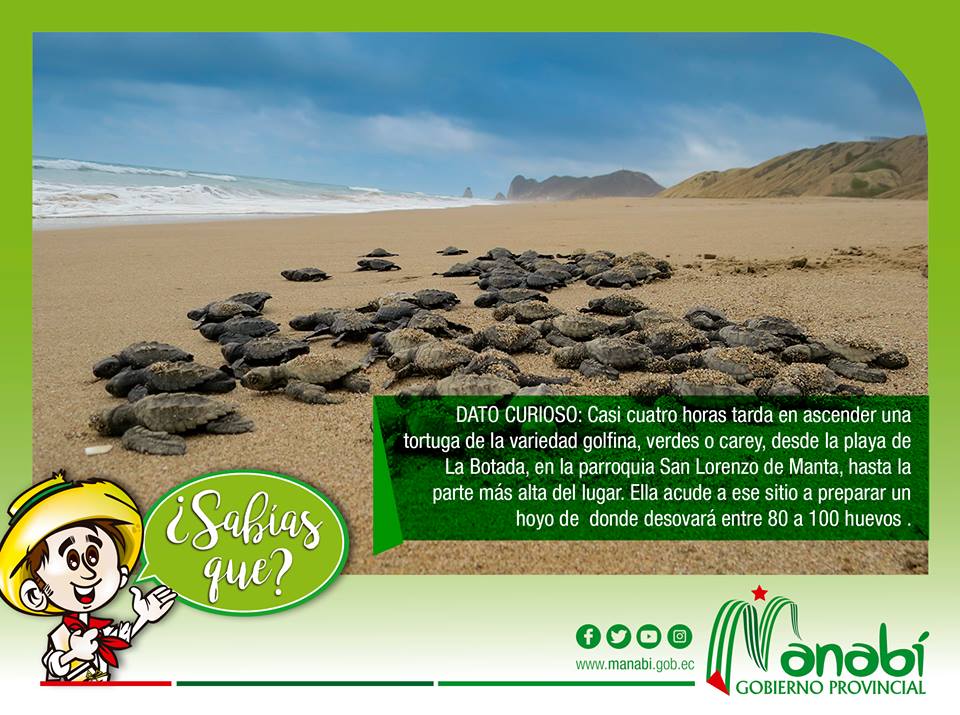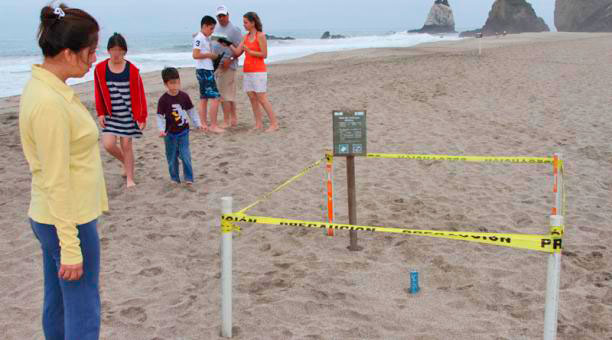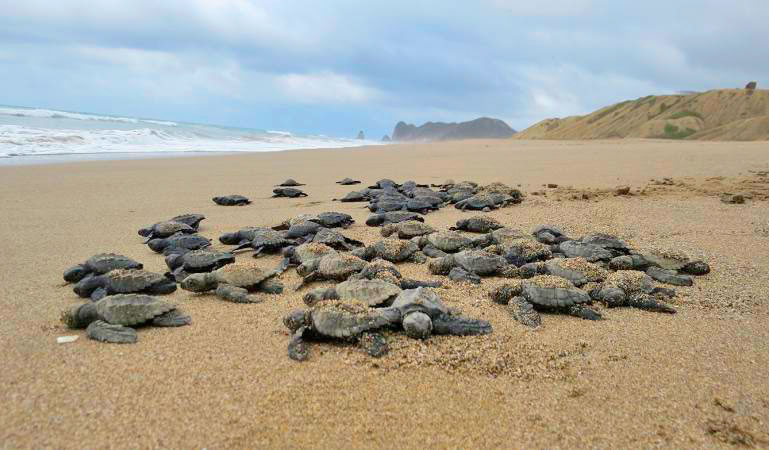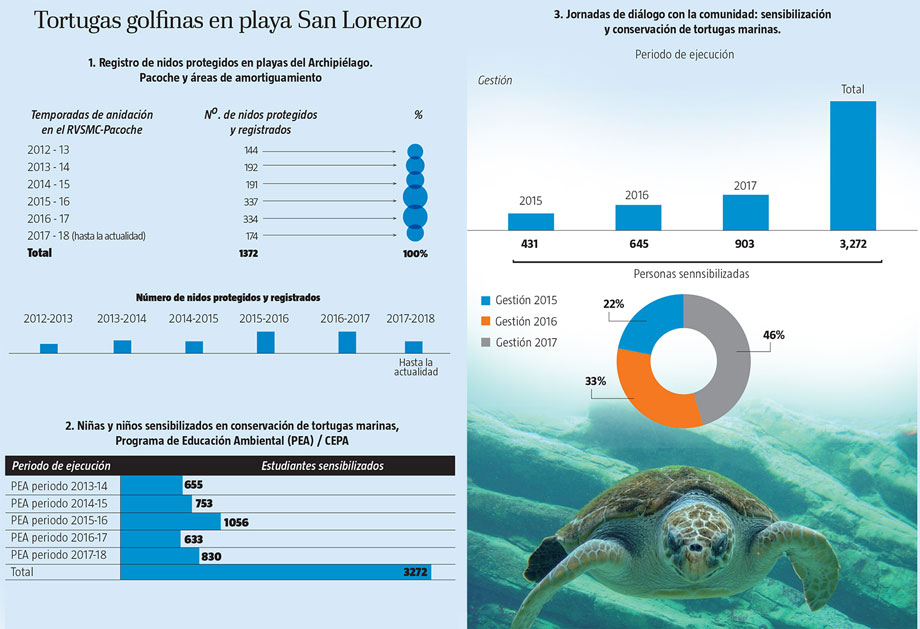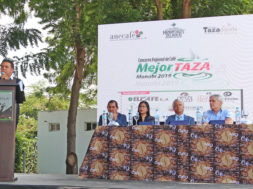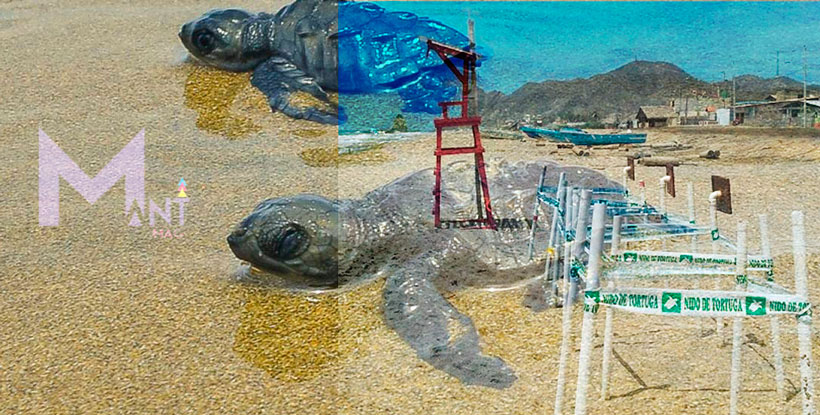
Ecuador: San Lorenzo, el santuario de las tortugas marinas en Manabí / a Turtle´s Sanctuary
Presentado por/presented by:
Its tiny gray bodies emerge from the sand. They crawl, driven by their four extremities, they head towards the sea in what is their first life or death race until they reach the ocean.
These are olive ridleys (lepidochelys olivacea). The nursery of these beach and sea babies is located in the San Lorenzo marine enclave, southwest of Manta, Manabí. This place, considered the sea turtle sanctuary, is located in the Coastal Marine Wildlife Refuge Pacoche (Rvsmcp).
Before breaking through after breaking the shell after 60 days of nesting, the mothers of olive ridleys arrive to spawn in the two kilometers of beach. Last October 5, when the clock marked 01:30, a mother olive ridley slowly emerged from the sea. A Rvsmcp team, consisting of two park rangers and the Iliana Solórzano area manager, arrived to perform their daily monitoring rounds.
A persistent downpour, a prelude to the arrival of the rainy season and the end of summer, hits with force due to the strong winds that blow on the beach. The olive ridley takes 25 minutes to reach the place where it will spawn. Ángel Reyes is one of the most experienced rangers. When he notices the presence of the turtle, he hurries to the ocean.
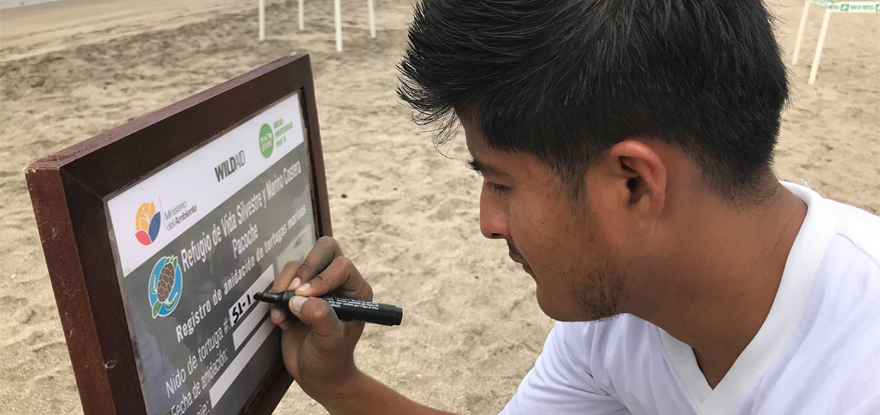
The park ranger José López Delgado writes the data of a nest registered in San Lorenzo beach. The species and the number of eggs are located. Wear waterproof and warm clothing to withstand the rigor of the weather. Attached to his head is a system of inflamed light. That equipment allows you to access the turtle at night and early morning and not stress it. These are international standards that govern access to monitoring tasks. Once the mother golfer chooses the place where she will lay her eggs, she begins to dig a hole in the sand. It digs with its rear fins, it does it slowly but continuously.
15 minutes pass. The hole is ready. The eggs begin to fall one after the other from the oviduct that is in the middle of their hind fins. After the turtle falls into a trance until the end of the spawning with 120 eggs. Slowly return to the sea. When dawn breaks, the next step is to mark the nest with four PVC pipes and a ribbon to form a square. This serves so that tourists who arrive do not step on the nests.
In the sixth spawning season that began in June 2017 and will extend to May 2018, 77 nests have been recorded in San Lorenzo and 111 in La Botada beach, which is adjacent to the first one. The area has become the sanctuary for sea turtles and since 2012 the Ministry of the Environment (MAE) has undertaken a protection program that is promoted together with the community.
Carlos Alvia, lives in the commune of Liguique, 10 minutes northwest of San Lorenzo. Account that since the project of the care to the nests began and Pacoche was declared protected zone, the situation changed in positive for the inhabitants, now there are many visitors that arrive at the zone.
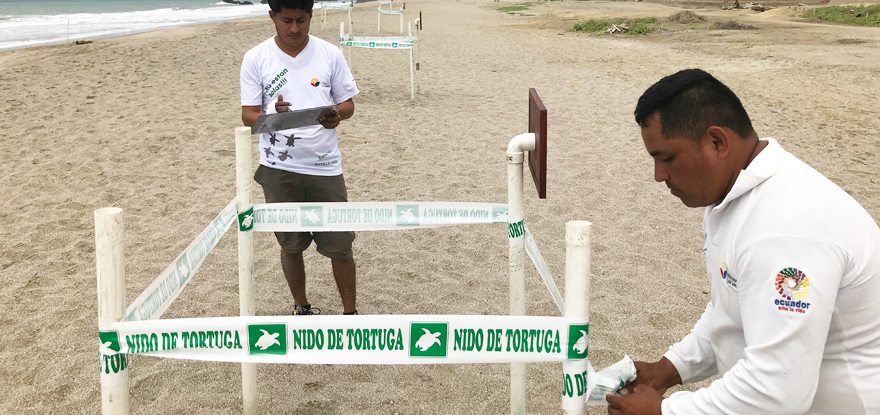
La Eclosión
The Hatching
In La Botada, northwest of San Lorenzo, a rocky mantle dominates part of the beach. The olive ridley nests lie in the less abrupt zone. Usually the neonates of lepidochelys olivacea, break their shells at night and early morning. But there are exceptions. Some do it in broad daylight. Hatching is recorded all year. When the olive ridley babies leave their nests, they break the shell, they take about 40 minutes to reach the surface from inside the nest.
When they are on the sand they crawl with agility. In sections of one and two meters advance. If they are lucky and there is no presence of predators they will reach their goal that will last between 30 and 50 minutes, reach the sea and be dragged by the waves to the depths. When the hatching is in the day and the sun increases, the neonates move very fast. The sand is hot, that is the cause.
The olive ridleys that reach their maturity and reach the reproductive stage (30 years), will return to San Lorenzo beach and La Botada also to deposit their eggs, in this way their natural cycle is completed.
El turismo se desarrolla en torno a las golfinas
(Vease también: La llegada de las golfinas a San Lorenzo motiva a los jóvenes a cuidar la naturaleza)
The tourism is developed around the golfinas On the San Lorenzo beach the benefits for the community are visible. Five restaurants, a dozen lodging places and rest houses have been adapted to cater to the tourists who arrive to observe the hatching and the most patient the spawning activity. In the restaurant of Xiomara Rivera, the movement is vertiginous from Monday to Friday, but on weekends they work more, tourists arrive in greater quantity.
The little turtles, those tiny animals are our blessing, before we were just a town of passage, now travelers come to consume and to stay, there are neighbors who have adapted their houses to rent to visitors, says Rivera.
The route that begins on the beach with turtle watching continues towards the cliff. There is a path that borders the massif, the panoramic views of the ocean are spectacular. You can observe the low flight of the blue footed boobies, gulls and pelicans.
In the sea the dolphin jumps and from June to September the passage of the humpback whales towards the Silver Island. The tourists are amazed by the place. It´s a quiet beach, with a forest where you can also watch the howler monkeys. The biologist Bravo, says that in the Pacoche reserve the community has tuned into the conservation issue and they are permanent allies of the turtles.
The biologist of the Non-Governmental Organization (NGO) Wildaid Manuel Bravo, highlighted San Lorenzo as the sanctuary of the golfinas. Bravo affirms that his entity has been accompanying the conservation project since 2014. We contribute to the issue of monitoring and preservation on land and sea, which allows approximately 30,000 turtles to enter the sea each year. Pacoche is certainly a great lesson in life.
El tema relacionado con cada una de las tortugas se ha convertido en una opción de vida para la mayoría de los lugareños. Por eso los cuidados y el compromiso de propios y extraños para con la vida silvestre resulta ser un beneficio para docenas de familias.Pacoche sin duda es un ejemplo de conservación a nivel mundial eso es notorio desde la playa hasta las zonas altas donde están los bosques húmedos y secos.The theme related to each of the turtles has become a life option for most of the locals. That is why the care and commitment of people and strangers to wildlife is a benefit for dozens of families.
Pacoche is undoubtedly an example of conservation worldwide that is notorious from the beach to the high areas where the humid and dry forests are.
En el suroeste de Manta se localiza el refugio de las tortugas golfinas
La declaratoria de Refugio de Vida Silvestre Marino Costera Pacoche, fue en octubre de 2008. Desde entonces se reconoció que los bosques que se encuentran en los cerros de Pacoche y a cuatro millas del área marina costera pasaron a formar del área de conservación. Son 5.049, 69 hectáreas en al área terrestre y 31.517,90 hectáreas en la zona marina. La reserva está conformada por ecosistemas marinos y bosques húmedo y seco tropical. Entre la flora y fauna figuran las tortugas, monos aulladores y unas 240 especies de aves. También hay reptiles y mamíferos. En las entrañas del bosque existe la paja toquilla que es cosechada para la elaboración de los sombreros por los tejedores de Montecristi y Portoviejo.
The declaration of Coastal Marine Wildlife Refuge Pacoche was in October 2008. Since then it was recognized that the forests found in the Pacoche hills and four miles from the coastal marine area were converted to the conservation area. There are 5,049, 69 hectares in the land area and 31,517.90 hectares in the marine area. The reserve is made up of marine ecosystems and tropical moist and dry forests. Among the flora and fauna are turtles, howler monkeys and about 240 species of birds. There are also reptiles and mammals. In the bowels of the forest there is straw toquilla that is harvested for the making of the hats by the weavers of Montecristi and Portoviejo.
(279)
